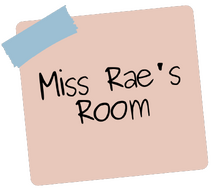|
Special Education teachers have been entrusted with two goals for their instruction:
#1 Special Education teachers will target students’ lagging skills to close the achievement gap. #2 Special Education teachers will provide intervention to facilitate access to grade level skills. I don’t know about you, but my diploma had my name on it; not Harry Houdini’s! We are not magicians! So how do we achieve our educator goals while helping our students achieve their learning goals?
Special Education students are considered to be Tier 3 students on the Response to Intervention (RTI) model. Tier 3 is the most intense level. Students with disabilities should receive individualized, intensive intervention in the area of the identified disability in order to accelerate progress toward an ability to independently access grade level standards.
When a student is receiving special education supports, he/she should be receiving explicit direct targeted instruction of lagging skills as well as strategies to help them access the general education curriculum in order to close the achievement gap AND enable Special Education students to gain independence with their learning disability. So how do we lesson plan for our special education students? All Special Education instruction should include targeted skill instruction, strategy instruction, and applied practice. Targeted Skill Instruction Targeted Skill Instruction means direct and explicit teaching of a student’s lagging skills. This instruction incorporates a variety of research-based strategies and varying teacher to student-centered instruction. Special Education teachers must directly and explicitly teach the skills that are required for a student to move to the next level of learning. There is a hierarchy to our learning standards. Special Education students’ foundational competencies are often areas of deficit. For example, if a student is a struggling reader, this portion of the lesson may teach phonics skills for decoding. There may be time spent on decoding words in isolation. Typically, skill instruction is supported with scientifically-based systematic, multisensory instructional programs for Special Education students. Strategy Special Education students, specifically those diagnosed with a learning disability, learn best with strategies. Think of strategies as scaffolded supports. You are teaching a trick to a student. This trick enables him/her to access the general education curriculum independently! Scaffolded supports should enable students to gain greater independence in their learning. For example, when instructing my students on how to respond to a text-based question, I teach them the RACE strategy. This response strategy helps them articulate their ideas into written form. It also enables them to connect their thinking to the text. RACE = Restate, Answer, Cite the evidence, Explain the evidence Students begin by Restating (Race) the question. For this, they learn TTQA (Turn That Question Around). This is another strategy. Next, students Answer the question (rAce). After answering the question, students Cite textual evidence that supports their answer (raCe). Finally, they Explain how this evidence supports their answer (racE). Strategies like TTQA and RACE provide students with tools for independently accessing academic content. Begin with the skill, teach the strategy, and then, allow student multiple variations of practice and application of the skill, using the strategy until mastery is achieved. Applied Practice Decades of research has shown the benefits of inclusion on the educational progress of special education students. There is no denying this! After direct instruction of a strategy, Special Education students should be allowed independent practice with the strategy within the Special Education setting and/or small group setting. Students should also be provided the opportunity to practice the skill in the general education setting. This should lead toward independent and generalized application of the skill! And once a Special Education student can independently apply strategies to access the general education curriculum, we have achieved our goal as teachers! Special education students have to work that much harder than the norm. So as special education teachers, we also have to work that much harder. We not only have to teach our students learning strategies for long-term, independent success, but we also have to simultaneously teach grade level standards and remediate lagging skills to close the gap! I tell my students they have to work that much harder. And it’s not an excuse. It’s just what it is. You have to work harder to achieve. And there’s nothing wrong with that. It just proves you’re that much stronger. That much braver. And it means that much more when you achieve! ~By Miss Rae
Motivate your students with these FREE WORK HARD! PLAY HARD! LEARN HARD! posters AND use them as conversation starters.
2 Comments
Leave a Reply. |
CategoriesAll 504 Academic Testing Academic Testing Reports Achievement Testing Reports Back To School B/d Reversals Coronavirus COVID-19 Discrepancy Model Distance Learning Distance Learning With LD ELL Emotional Disability Executive Functioning Extended School Year First Year Special Education Teacher Advice Fluid Reasoning FREEBIES Goal Tracking IEP IEP At A Glance IEP Goals IEP Meetings Learning Disability Oral Reading Fluency Positive Affirmations For Special Education Students Progress Monitoring Reading Remote Learning RTI Rubrics Running Records SEL For Learning Disabilities Social Emotional Learning Special Ed Teacher Interview Questions Special Ed Teacher Job Description Special Education Special Education Progress Reports Special Education Reading Special Education Reading Programs Special Education Students Special Education Teachers Special Education Teachers Positive Affirmations Special Education Teacher Tips Special Education Websites Specially Designed Reading Instruction Teaching Strategy Trauma Wilson Reading Wilson Reading IEP Goals Writer's Workshop |










 RSS Feed
RSS Feed